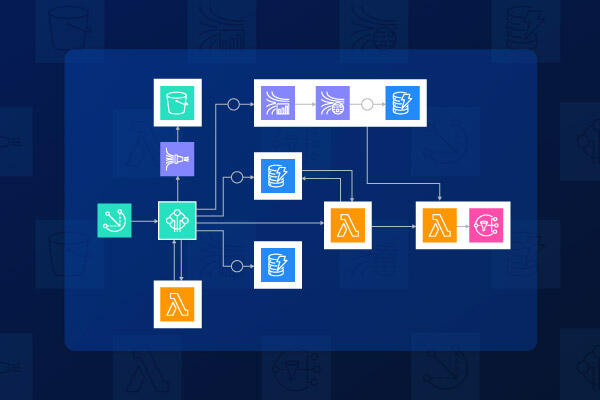
AWS Architecture – 3 Major Components of AWS Architecture
By Udit Agarwal

Amazon Web Services (AWS) is a widely used cloud computing platform that offers a wide range of services, including storage, database management, networking, machine learning, and more. The AWS architecture is a complex system of interconnected components that work together to provide reliable, scalable, and highly available cloud infrastructure. This article will discuss the three primary details of AWS architecture and their roles in the overall system.
Compute Services
The first principal component of AWS architecture is computed services. These services provide computing resources to users, allowing them to run their applications and workloads in the cloud. The central computing services offered by AWS include:
- Amazon Elastic Compute Cloud (EC2): This web service provides resizable computing capacity in the cloud. With EC2, users can quickly launch virtual machines and scale them up or down as needed.
- AWS Lambda: Users can run code without the need for server management using this serverless computing service. With Lambda, users can execute code in response to events, such as changes to data in an Amazon S3 bucket or an Amazon DynamoDB table.
- Amazon Elastic Container Service (ECS): This highly scalable container management service effortlessly enables running, stopping, and managing Docker containers on a cluster of EC2 instances.
Compute services are essential for running applications and workloads in the cloud. They provide the necessary computing resources and enable users to scale up or down to meet demand.
Storage Services
The second major component of AWS architecture is storage services. These services provide secure and scalable storage options for users’ data. The primary storage services offered by AWS include:
- Amazon Simple Storage Service (S3): This is an object storage service that provides industry-leading scalability, data availability, security, and performance. With S3, users can store and retrieve any data online.
- Amazon Elastic Block Store (EBS): This block-level storage service provides persistent block-level storage volumes for EC2 instances. With EBS, users can create, attach, and detach EBS volumes to EC2 instances.
- Amazon Glacier: This is a low-cost, secure, and durable cloud storage service for data archiving and long-term backup. With Glacier, users can store data for months, years, or even decades cheaply.
Storage services are essential for securely storing and managing users’ data in the cloud. The service offers easily accessible online storage options that are scalable and durable.

Database Services
The third major component of AWS architecture is database services. These services provide scalable and reliable database options for users’ applications and workloads. The primary database services offered by AWS include:
- Amazon Relational Database Service (RDS): This fully managed relational database service makes it easy to set up, operate, and scale a relational database in the cloud. With RDS, users can choose from several popular database engines, including MySQL, PostgreSQL, and SQL Server.
- Amazon DynamoDB: This fast and flexible NoSQL database service provides consistent, single-digit millisecond latency at any scale. With DynamoDB, users can easily store and retrieve data and scale up or down as needed.
- Amazon Aurora: This is a MySQL and PostgreSQL-compatible relational database engine that provides high performance and availability at a low cost. With Aurora, users can quickly scale up or down to meet demand and pay only for what they use.
Database services are essential for storing, managing, and retrieving data in the cloud. They provide scalable and reliable database options that can be easily accessed and operated anywhere on the web.
Conclusion
To sum up, AWS architecture is a comprehensive and robust solution that enables businesses to leverage cloud computing to achieve their goals. The three major components of AWS architecture, namely, computing, storage, and networking, provide a strong foundation for building scalable and flexible applications. AWS offers a wide range of services that can customize to meet specific business requirements.
Using AWS architecture, organisations can benefit from improved agility, increased scalability, reduced costs, and enhanced security. The flexibility and scalability of AWS enable businesses to adjust their resources per the changing demands of their applications, ensuring that they can always meet their customers’ needs. The platform’s pay-as-you-go pricing model ensures that businesses only pay for what they use, making it a cost-effective option for organisations of all sizes.